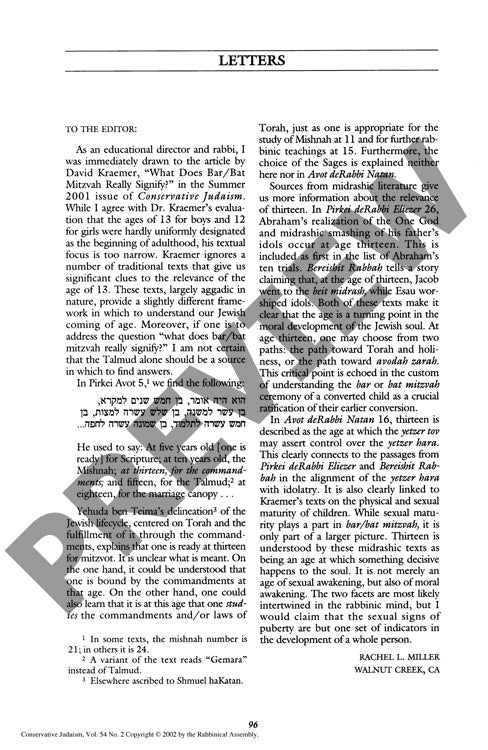Letters
Couldn't load pickup availability
At what age does a child become morally responsible in Jewish tradition, and why specifically thirteen? While previous scholarship like David Kraemer's work focused narrowly on Talmudic texts, a broader examination of midrashic literature reveals that age thirteen represents far more than physical maturation - it marks a decisive spiritual crossroads. Analysis of primary sources including Pirkei deRabbi Eliezer, Bereishit Rabbah, and Avot deRabbi Natan illuminates how traditional Jewish texts consistently portray thirteen as the age when individuals face a critical choice between Torah observance and idolatry. This theme emerges in narratives of Abraham's rejection of idol worship and Jacob's dedication to Torah study. The texts suggest that at thirteen, the yetzer tov (good inclination) becomes capable of mastering the yetzer hara (evil inclination), representing a profound moral awakening that coincides with sexual maturity. Through close textual examination of these aggadic sources, the research demonstrates that while physical development matters, the bar/bat mitzvah fundamentally celebrates a comprehensive spiritual and moral transformation - one that traditional Jewish sources beyond the Talmud recognize as a defining milestone in human development.

More Information
-
Physical Description
-
Publication Information
Published 2002
ISBN
-
Publication Credits

